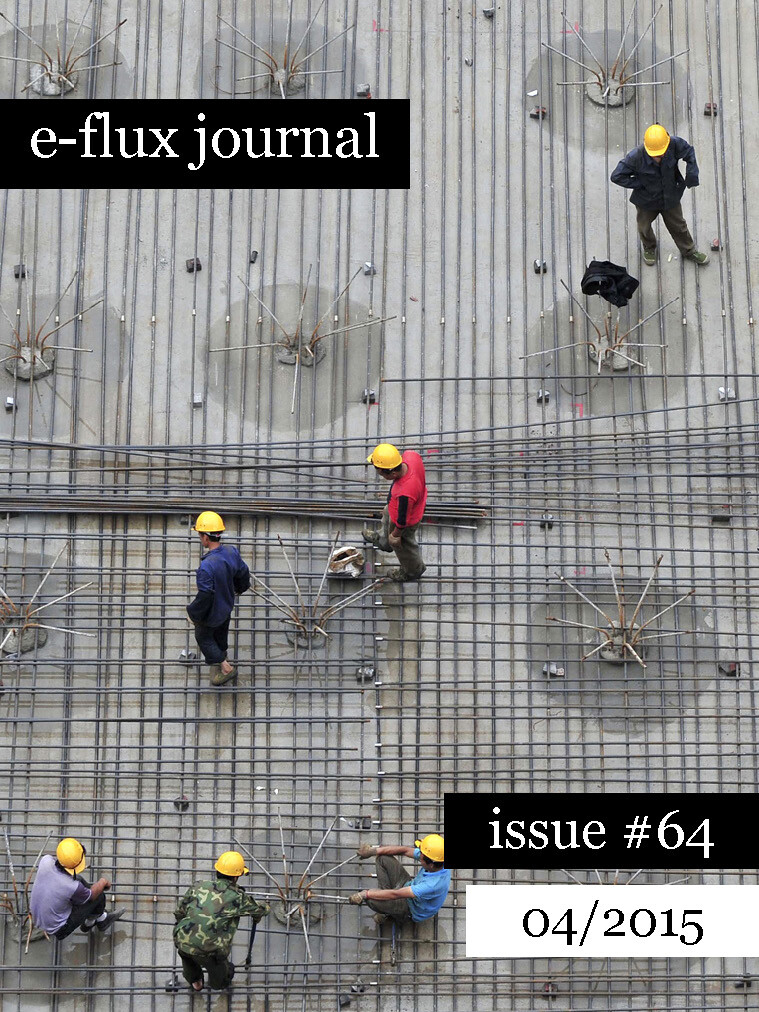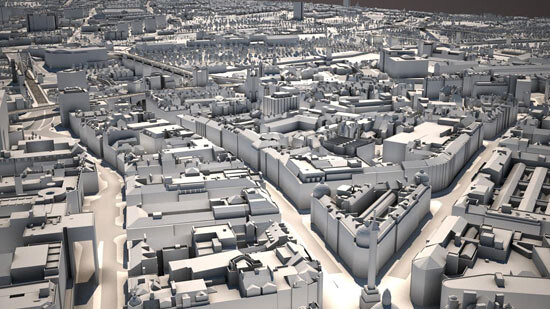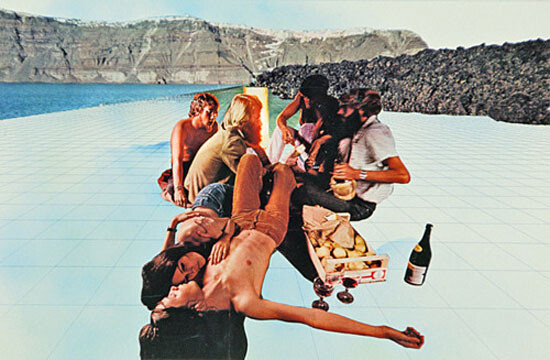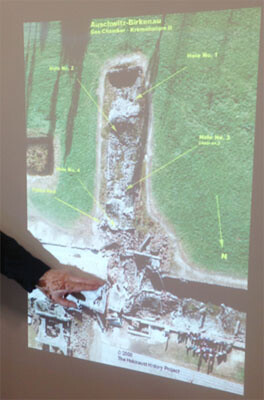In internet slang, 3DPD—meaning “three-dimensional pig disgusting”—is used to indicate that the 2D world is superior to the 3D world. The 3D world is lumpy. The friction from gravity and laws restricts individual freedom. There is the problem of having a body. And the light—the blizzard of photons coming from everywhere—is blinding and ugly. It is much more appealingly dark and smooth and pure to dematerialize into information and nurture faith in a digital platform. The internet is arguably…
Issue #64
“Architecture as Intangible Infrastructure” Issue One
April 2015
With:
Nikolaus Hirsch, Julieta Aranda, Brian Kuan Wood, Anton Vidokle, Keller Easterling, Pier Vittorio Aureli, Justin McGuirk, Ravi Sundaram, Eyal Weizman, Philip Ursprung, and Felicity D. Scott
Architecture remains the most tangible way of constructing the social. Yet, the system we call “architecture” is not reducible to the physical, the tactile, the obvious. In the history of avant-garde architecture, immateriality and intangibility carried a promise of liberation, of escape from the heaviness of building, from completion, from gravity or reality. A new contemporary architecture would be built out of pure knowledge—drafted on paper as an idea to be shared, never bogged down by…
View List
View Grid
8 Essays
April 2015
How to reproduce reality within thinking? How to build a set of categories that allow one to comprehend and represent complex social conditions? These were the questions that Marx asked himself when facing the task of describing the reality of capitalistic modes of production. He noted that when abstract things such as money rule the world and define all social relationships, it is hard to separate the abstract from the real, the tangible from the intangible, the concrete from the…
In 1972, as part of MoMA’s exhibition “Italy: The New Domestic Landscape,” the Radical Design group Superstudio installed a small cubic room with mirrored walls that appeared to replicate itself into infinity. The group’s proposal, submitted to the curator Emilio Ambasz, had taken the form of a one-page statement describing exactly how this “microenvironment” should be installed, followed by a further nine typed pages of theoretical exposition by Superstudio’s cofounder Adolfo Natalini. In…
More than a decade ago, Rem Koolhaas published his widely circulated essay “Fragments of a Lecture on Lagos” as part of a Documenta 11 platform in that city devoted to African urbanism. 1 Koolhaas went on to consider the status of Lagos, which seemed to have an aura of “apocalyptic violence” and of a “smoldering rubbish dump.” A series of further enquiries revealed new informal networks entering the interstices of older, decaying infrastructures. Finally, it was a crucial helicopter ride by…
Negative Positivism
The new millennium began with a bizarre legal battle. The David Irving trial, which unfolded at the English High Court of Justice between January and April 2000, involved one of the most aggressive cross-examinations of architectural evidence—drawings, models, aerial and ground-level photographs—ever undertaken in a legal context. The case unfolded around a libel suit filed by David Irving against an American writer and her publisher, Penguin Books, for calling him…
On a rainy day in spring 2014, I visited the Nantes School of Architecture designed by Lacaton & Vassal Architects. Opened in 2009, it was the result of a competition held in 2002 to replace the original school from the early 1970s, which had become too small to house the expanded study program and the growing number of students. The Nantes School of Architecture is one of about twenty Écoles Nationales Supérieures d’Architecture in France, and houses about one thousand students. I had…
In a 1967 report published in Eye: Magazine of the Yale Arts Association , Charles Moore, chairman of the department of architecture at Yale University’s School of Art and Architecture (A&A), spoke to a “marked shift” then taking place.
Students and faculty have now become involved to an unprecedented extent, in real problems in all their complexity with a concern for social issues and more concern for its form and less concern for the shape of objects in it. To an increasing…








